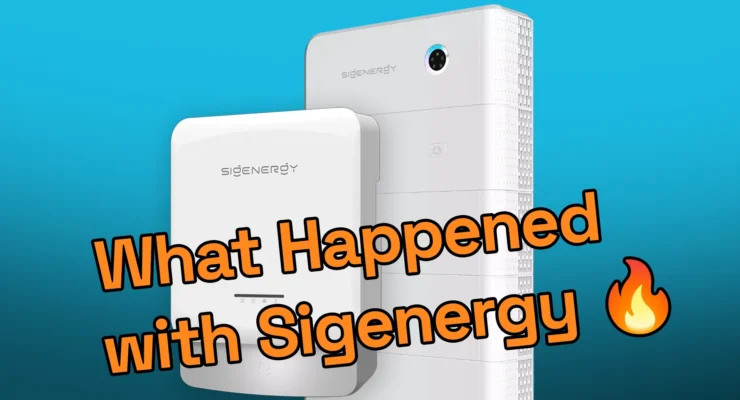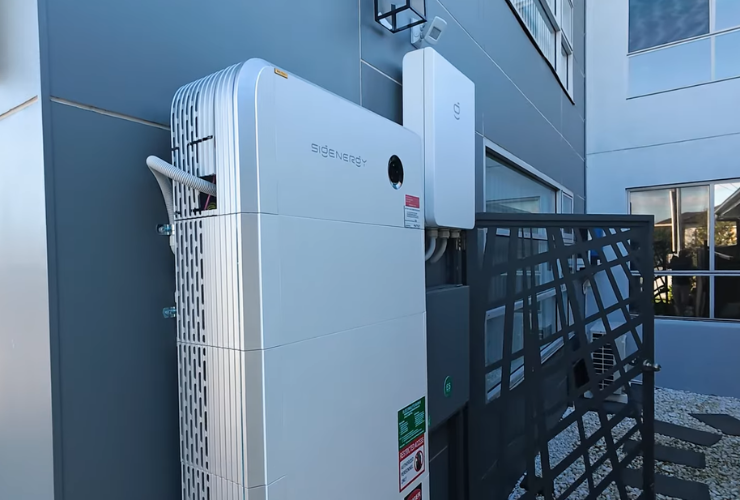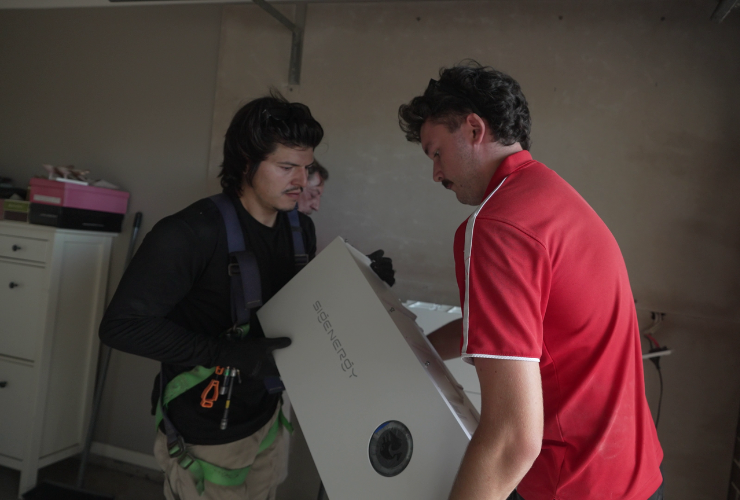Understanding the Sigenergy Incident: What We Know So Far
By Markus Lambert*
A recent conversation in the Australian solar and battery community has focused on a small number of reported heat-damage incidents involving single-phase Sigenergy inverters. As the sector grows rapidly and more homes join Virtual Power Plants (VPPs), it’s important that discussions around safety are factual, balanced and grounded in engineering reality.
This article summarises what is known, what has been reported by installers and Sigenergy, what actions have been taken, and what Australian consumers should understand.
A small number of systems were affected
The reported cases involved heat, sparking, or melting around the AC plug area on certain single-phase Sigenergy units. There are two key perspectives on the underlying cause:
- Installation-Related contributing factors
Sigenergy has indicated that the affected units appear to involve incorrect terminations, including:
- cable sizing not matching the specification
- crimps not applied correctly
- bending radius of cables that created strain
These types of termination issues are not unique to one manufacturer and can occur with any high-current system if installation requirements aren’t followed precisely.
- Connector Design and Installation Materials
Some installers have expressed a different view:
- The original AC connector design may have been more complex than ideal
- Certain recommended cable materials were difficult to source locally
- Workarounds may have been used in some cases by installers, increasing the risk of poor terminations
This highlights the ongoing challenge of designing equipment that is robust both technically and in practical, real-world installation conditions.
The Role of VPP Participation
Another important factor is Virtual Power Plants (VPP) load cycles.
When thousands of batteries discharge simultaneously during the evening peak — often around 6 pm — electrical stress on the connection points of those batteries’ AC cables increases significantly.
If a termination is less than ideal, repeated high-load cycles can create heat buildup over time. This can turn a minor weakness into a visible failure.
This issue is not specific to Sigenergy, but due to their larger inverter discharge capacity, this might mean Sigenergy is the canary in the coal mine. Now that this has occurred, it needs to be treated as an industry-wide consideration as VPP programs continue to expand across Australia.
Context: A rapidly evolving industry
The home battery market is still developing. As with the early years of automotive safety — before airbags, crumple zones or modern engineering standards — today’s solar and battery industry is maturing at speed.
With every new product generation:
- manufacturers refine designs
- installers update methods and tools
- regulators adjust standards based on real-world performance
Incidents, while rare, often provide important lessons that lead to improved safety and reliability for future systems.
Sigenergy’s response
Sigenergy implemented a combination of technical, operational and customer-support measures to address the issue. These actions were communicated to installers and impacted customers through formal channels.
Key steps taken by Sigenergy include:
- Redesigning the AC connector to a simpler, more robust OT-style plug
- Releasing firmware safety measures that monitor connection performance and temporarily limit output under extreme conditions
- Deploying engineers nationally to support installers and assess systems
- Launching a proactive replacement program for all affected single-phase units
- Covering all replacement costs, plus offering a $500 subsidy per unit to installers completing the upgrade
- Extending warranty coverage to 12 years on all replacement inverters, which meant an additional 2 years.
- Notifying affected customers through the mySigen App, in compliance with regulatory processes
These steps reflect a proactive and comprehensive approach to system safety and customer support.
About Media Coverage
Some recent commentary in the industry has focused heavily on individual incidents without fully addressing the broader technical context or Sigenergy’s corrective actions.
It is also worth noting that highly emotive or sensational reporting — including some commentary from SolarQuotes — can unintentionally create confusion for consumers and overshadow the genuine engineering work being done to improve products.
While media scrutiny is healthy, coverage that emphasises drama over detail may discourage consumer confidence and does not always reflect the full context needed for informed decision-making.
Striking a balanced tone is essential if we want to support progress rather than hinder it.
For clarity and fairness:
- A small number of systems were affected
- The plug design, while it might have contributed, is now being changed
- VPP-related load cycles potentially played a contributing role
- Installation-related factors also seemed to have played a role
- Sigenergy acted promptly once the issue was clearly identified
- Regulatory communication procedures and ongoing investigations restricted some public messaging
It’s important that discussions around safety avoid unnecessary alarm and remain rooted in verified information. Clear, factual reporting supports consumer confidence and industry improvement.
Key Takeaways for homeowners
If you own or are considering a Sigenergy system, here are the essential points:
- Sigenergy systems remain safe to operate
- Only a very small number of installations were affected
- The issue involved termination quality and a connector design that has now been improved
- VPP high-load events can stress imperfect connections across all brands
- Sigenergy is replacing all affected units at no cost
- Replacement inverters include a 12-year warranty
- Firmware protections are temporary and precautionary
These measures significantly reduce the chance of the issue re-occurring.
Balanced Industry Perspective
As Australia transitions to a cleaner energy system, the battery market will continue to evolve. The focus should remain on:
- accurate technical information
- practical installer support
- continuous product improvement
- clear communication
- and reducing unnecessary fear or confusion
Industry progress depends on collaboration, transparency and a commitment to learning from real-world experience.
About the Author
The author of this article is not affiliated with Sigenergy. They do not represent the company. The author is an independent industry professional who:
- has worked in Australian solar since 2006
- owns a Sigenergy system personally
- and supports balanced, fact-based discussion to help Australian consumers and installers navigate a rapidly changing battery landscape.





